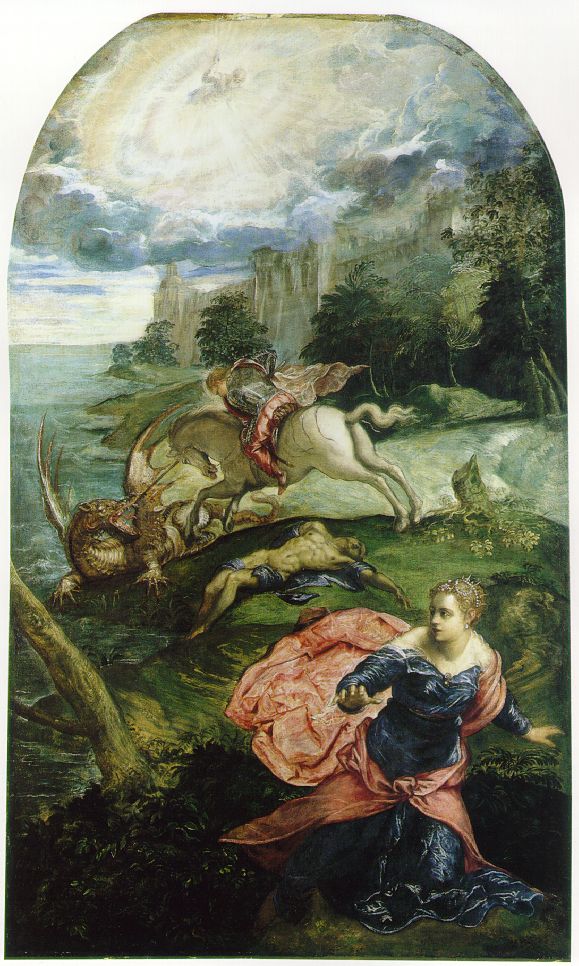
“[Tintoretto's] painting of St. George’s fight with the dragon, in London, shows how the weird light and the broken tones add to the feeling of tension and excitement. We feel the drama has just reached its climax. The princess seems to be rushing right out of the picture towards us while the hero is removed, against all rules, far into the background of the scene…
Vasari, a great Florentine critic and biographer of the period… thought the work was marred by careless execution and eccentric taste. He was puzzled by the lack of ‘finish’ Tintoretto gave his work. ‘His sketches,’ he says, ‘are so crude that his pencil strokes show more force than judgment and seem to have been made by chance.’ It is a reproach which from that time onwards has often been made against modern artists. Perhaps this is not altogether surprising, for these great innovators in art have often concentrated on the essential things and refused to worry about technical perfection in the usual sense. In periods like that of Tintoretto, technical excellence had reached such a high standard that anyone with some mechanical aptitude could master some of its tricks. A man like Tintoretto wanted to show things in a new light, he wanted to explore new ways of representing the legends and myths of the past. He considered his painting complete when he had conveyed his vision of the legendary scene. A smooth and careful finish did not interest him, for it did not serve his purpose. On the contrary—it might have distracted our attention from the dramatic happenings of the picture. So he left it at that and left people wondering.”
Ernst H. Gombrich, “Chapter 18: A Crisis of Art,” The Story of Art, 15th edition
